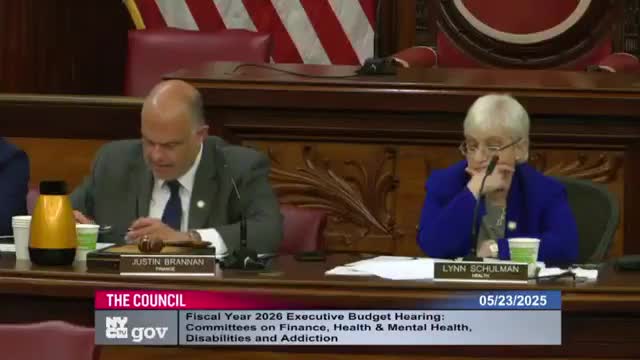DOHMH discusses equitable funding for $1.5M cat rescue TNR initiative
May 26, 2025 | New York City Council, New York City, New York County, New York
Thanks to Scribe from Workplace AI , all articles about New York are free for you to enjoy throughout 2025!

This article was created by AI using a video recording of the meeting. It summarizes the key points discussed, but for full details and context, please refer to the video of the full meeting. Link to Full Meeting
The Department of Health and Mental Hygiene (DOHMH) acknowledged the council's proposal and expressed a commitment to equitable distribution of funds should the initiative be approved. However, officials clarified that while they provide information and resources for TNR practices, they currently do not fund these programs directly. This has raised concerns among council members, who argue that the city should take greater responsibility for animal welfare, especially in underserved communities where access to spay and neuter services is limited.
The DOHMH highlighted its existing programs, such as the Animal Population Control Fund, which offers subsidized spay and neuter services for pet owners who meet income eligibility requirements. This fund, managed by the ASPCA, has a budget of $3 million over six years, but council members emphasized that more needs to be done to prevent the overflow of animals in shelters.
As discussions progressed, council members urged the DOHMH to adopt a broader vision for animal welfare, particularly regarding the feral cat population. They pointed out that the lack of accessible TNR services contributes to the challenges faced by shelters, suggesting that a more proactive approach could alleviate some of the pressures on these facilities.
The meeting underscored the importance of collaboration among city agencies, including the Mayor's Office on Animal Welfare and the Animal Care Centers (ACC), to create a coordinated response to pet retention and rescue support. As the city moves forward, the emphasis remains on ensuring that resources are allocated effectively to address the needs of both animals and the communities that care for them.
The outcome of this budget proposal could significantly impact animal welfare efforts across New York City, highlighting the need for ongoing dialogue and action to support both community advocates and the city's animal population.
Converted from 🔴 LIVE: Committees on Finance/Health/Mental Health FY26 Executive Budget Hearing meeting on May 26, 2025
Link to Full Meeting
Comments
Watch the video clip
This article is based on a recent meeting—watch the full video and explore the complete transcript for deeper insights into the discussion.
Watch the video clip